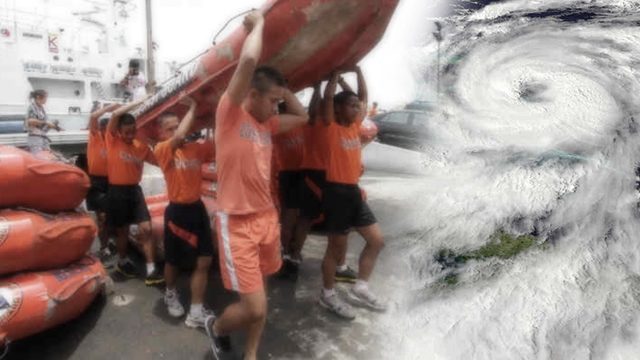SUMMARY
This is AI generated summarization, which may have errors. For context, always refer to the full article.

MANILA, Philippines – Super Typhoon Yolanda (international code name: Haiyan) taught the Department of Social Welfare and Development (DSWD) and the World Food Programme (WFP) lessons in disaster response.
Nearly two years after the disaster, both agencies continue to stress the importance of improved mechanisms in jointly approaching disaster response. (READ: DSWD and WFP partner for enhancing disaster preparedness)
Speaking on Rappler Talk on Monday, June 29, Social Welfare Secretary Corazon “Dinky” Soliman and WFP country director Praveen Agrawal discussed their agencies’ preparations for upcoming disasters, as the typhoon season approaches.
Soliman and Agrawal were both on board the first C130 that landed on Tacloban after Yolanda’s onslaught in November 2013. They arrived to a devastated city of displaced victims and looters.
According to Soliman, there was chaos because people did not know that help was coming. “This is the reason we [are working on disaster] preparedness.” (READ: Tormented typhoon victims scour for food)
Multiple-point assistance
One of the DSWD’s measures to achieve optimal preparedness is through capacity building, particularly on warehousing and logistics.
In partnership with the WFP, Soliman said the National Resource Operations Center (NROC) in Pasay City, which she described as “the logistics master of humanitarian response,” will be improved. It serves as the DSWD’s main repacking center for relief goods.
The DSWD and the WFP will also jointly establish disaster hubs in provincial locations. They will be established in Clark Freeport in Luzon, Cebu City in Visayas, and either in Davao or General Santos City in Mindanao. These areas, according to Soliman, are easily accessible by land, air, and sea.
“The Philippines, being an island nation, needs to address crises from multiple points,” WFP’s Agrawal commented. “Having a 3-hub process, we feel, will be the best [way] to address this.”
Meanwhile, to maximize productivity, the NROC will have a mechanized repacking system come July. Soliman said that through the system, the agency will be able to repack 50,000 boxes of relief goods per day.
In addition, the system will no longer make use of plastics in storing and dispensing relief goods.
The greatest asset
But it is not only logistics that is important. For Agrawal, the greatest assets are the people.
“You need to have people who can hit the ground running, [who are able] to do damage assessments,” the WFP country director said. The WFP is working with the DSWD and the Office of Civil Defense to institute a training program that will educate people on how to assess disaster damage.
Agrawal also underscored the importance of using existing aid platforms and modifying them to fit the context. The WFP and the DSWD did this by utilizing unconditional cash transfer in the aftermath of Yolanda.
Through the system, they were able to immediately provide cash to 500,000 people who are registered members of the Pantawid Pamilyang Pilipino Program (4Ps). They are currently working with the Land Bank of the Philippines to ensure that the system may be utilized in future disasters.
“In a disaster, the sooner you are able to bring money into the areas, the sooner the durable solution can happen,” Soliman said.
She added that people use the money not only for food but also for security.
‘Forecasting the unforecastable’
Meanwhile, improvements in technology have been of great help to agencies like the DSWD and the WFP in terms of pre-disaster risk assessment.
Soliman said that through the Hydromet technology of the state weather bureau PAGASA, “We can forecast the path of the typhoon as early as 5 days before [it] comes in.” This is essential in identifying vulnerable areas that would need the greatest attention later on.
According to Agrawal, as both the DSWD and the WFP are carrying out more strategic work in terms of preparedness, the challenge is no longer the question of responding but of “forecasting the unforecastable.”
The WFP country director added, “[Effective response] is looking at situations well ahead of time [and asking] what are the actions that one could take.”
Agrawal believes that innovation is one way to achieve this. “The Philippines is a middle-income country so [the solution] is not bringing in new technologies but…strengthening some of that technology,” he said.
“It is a change from within.” – Rappler.com
Janelle Paris is an intern for MovePH, Rappler’s citizen journalism arm. She hopes, in the future, to keep writing and, above all, telling stories.
Add a comment
How does this make you feel?
There are no comments yet. Add your comment to start the conversation.